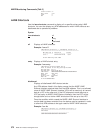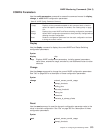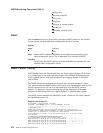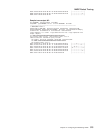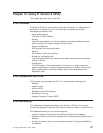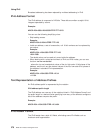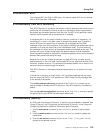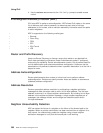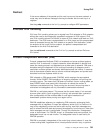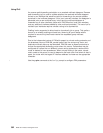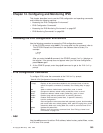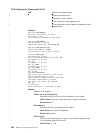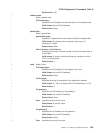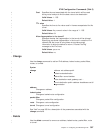
4. Use the set acc on command at the IPv6 Config> prompt to enable access
control.
IPv6 Neighbor Discovery Protocol (NDP)
IPv6 uses NDP to perform autoconfiguration. NDP allows IPv6 nodes on the same
link to discover each other’s presence, to determine each other’s link-layer
addresses, to find routers, and to maintain reachability information about the paths
to active neighbors.
NDP is supported on the following media types:
v Ethernet
v Token Ring
v FDDI
v PPP
v IP64 Tunnel
v LCS
Router and Prefix Discovery
Hosts use Router Discovery to discover routers that reside on an attached link.
Each router periodically multicasts a Router Advertisement packet, if configured,
announcing its availability. Router advertisements contain a list of prefixes used for
on-link determination and autonomous address configuration. Hosts can use the
advertised on-link prefixes to determine when a packet’s destination is on the link or
beyond a router.
Address Autoconfiguration
Router advertisements allow routers to inform host how to perform address
autoconfiguration. Routers can specify whether hosts use stateful or autonomous
(stateless) address configuration.
Address Resolution
Routers accomplish address resolution by multicasting a neighbor solicitation
message that asks the target node to return its link-layer address. The link-layer
address is returned in a unicast neighbor advertisement. By including its link-layer
address in the neighbor solicitation message, a single request-response pair of
messages, the message initiator and the target can determine each other’s
link-layer addresses.
Neighbor Unreachability Detection
NDP can detect the failure of a neighbor or the failure of the forward path to the
neighbor. When no positive confirmation has been received from a neighbor for a
time interval, the node actively probes the neighbor using unicast neighbor
solicitation messages to verify that the forward path is still working.
Using IPv6
380
MRS V3.2 Protocol Config Ref Vol 2
|
|
|
|
|
|
|



